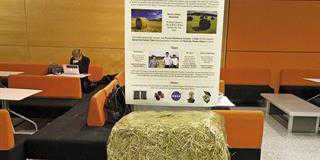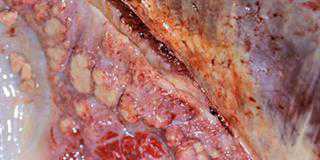Crude glycerine, a by-product of biodiesel production, could be introduced as an economical ingredient in cattle feeds, according to US researchers. Jim MacDonald, a beef cattle nutritionist at Texas AgriLife Research, says that during biodiesel production from crops such as cottonseed oil, glycerol is separated from fatty acids. The latter are turned into the biodiesel while the glycerol has the potential to become an ingredient in livestock feed.
MacDonald adds that glycerine flows easier at low temperatures than molasses or similar products and is non-corrosive to equipment. It is also low in phosphorus, protein and sulphur, which can be concentrated in other dietary ingredients. Finally, it is normally cheaper than maize. “Crude glycerine is usually priced at a discount relative to maize, so we wanted to look at replacing maize to evaluate its energy value,” MacDonald says.
He teamed up with Mike Brown at West Texas A&M University to conduct four experiments over the past two years to determine the value of feeding crude glycerine in beef growing and finishing diets. The studies focused on optimal concentration and which dietary components were most optimally displaced by crude glycerine in growing diets.
The researchers looked at two strategies: replacing maize and replacing a percentage of forage. In the former, they saw an optimal inclusion of between 2,5% and 7,5% of glycerine. MacDonald says that at 10% inclusion, feed efficiency was reduced. Brown explains that when forage was replaced, they saw no change in average daily gain, but the cattle consumed less feed.
The feed efficiency was improved when either 5% or 10% glycerine was fed. “I feel very comfortable using crude glycerine up to 7,5% of a diet,” MacDonald says. The researchers tested for a possible negative impact on fibre digestibility, but found none when the crude glycerine was fed at the low levels. “We also saw an increase in microbial protein and a reduction in rumen ammonia,” MacDonald says.
In high-forage diets, excess nitrogen is often formed in the rumen, which is excreted as urea and volatilised into the atmosphere as ammonia. The crude glycerine may allow more of the nitrogen to be captured before it is excreted and thus reduce ammonia emissions of cattle grazing high quality forage. “We also observed no negative impacts on animal health up to 10% inclusion in diets of newly received calves,” MacDonald says.













